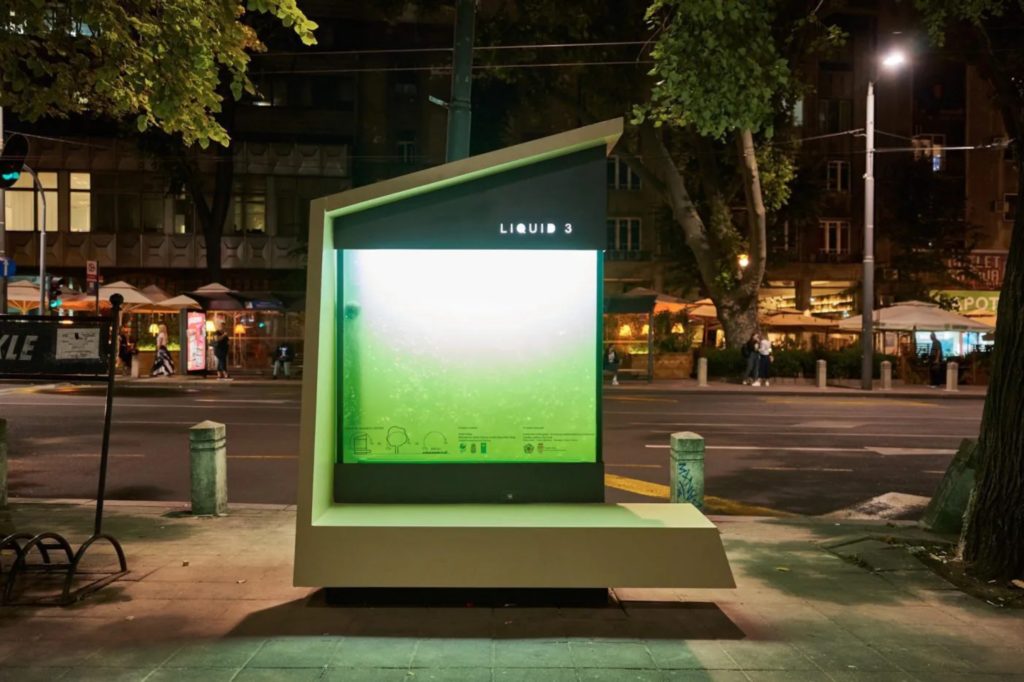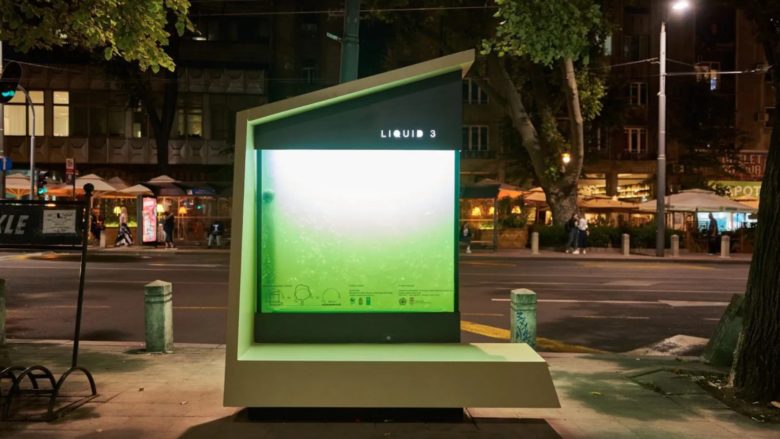
“How Scientists in Serbia are innovating urban carbon capture”
Sitting just outside the municipality of Stari Grad in Belgrade is what appears to be a glowing green lamp. Pedestrians stare at the bubbling green fluid and fluorescent light emitted from it. It’s immediately eye-catching, but its purpose is elusive at first glance. Upon closer inspection, one would realize that this is no ordinary street lamp: it is the first urban photo-bioreactor in Serbia.
Photo-bioreactors are clever tools. They contain organisms that use photons to create organic biomass. In other words, light is used as energy to pull carbon out of the atmosphere and place it into organic compounds. It’s an ingenious technique, but it does raise some questions. Why use a photo-bioreactor when trees exist? Don’t trees and photo-bioreactors serve the same purpose, to pull carbon out of the air?
Although trees have a plethora of uses, they aren’t the ideal method of carbon capture in cities. In cities like New York or London, space is at a premium, and this rule applies even for trees. Their long winding root systems crack concrete and asphalt. In addition, they disturb underground municipal services like plumbing, electrical, and passenger train lines. As a carbon capture tool, trees are feeble in urban environments. Trees often become sick from toxic fumes, and they require a high amount of maintenance to stay healthy.
Enter the photo-bioreactor, or as some like to call it, “liquid trees.” According to researchers, “a 600-liter tank does the same work as two ten-year-old trees, or 200 square meters of grass, in roughly the same area as a park bench.” In addition to being efficient, photobioreactors are resilient. The tank contains a specific strain of algae called Chlorella vulgaris, which is native to serbia. Chlorella vulgaris can withstand temperatures from 5º to 35º and is resistant to toxic fumes. This specific model can do more than carbon capture. This model is named the Liquid3, and it contains a solar panel that allows the tank to glow at night. In addition, it has usb charging ports and seating area. What results is a mesmerizing, multi use public installation.
Despite all of its benefits, “Liquid trees” will not render trees obsolete. It should be noted that trees function as more than just carbon capture machines. In cities with lots of noise pollution, tree leaves can disperse and scatter sound resulting in quiet streets, according to ScienceDirect. Also, living spaces with trees have been shown to provide mental health benefits. For this reason, it is misleading to label photobioreactors as “liquid trees.”
This name implies that they are replacing trees. They should not act as a replacement, but rather as a supplement to trees in urban spaces. While there is some overlap in their carbon capture ability, both trees and photo bioreactors bring unique attributes to an urban environment. With that being said, as cities move to implement tools for cleaner air, there may be a glowing green photo-bioreactor popping up near you.

